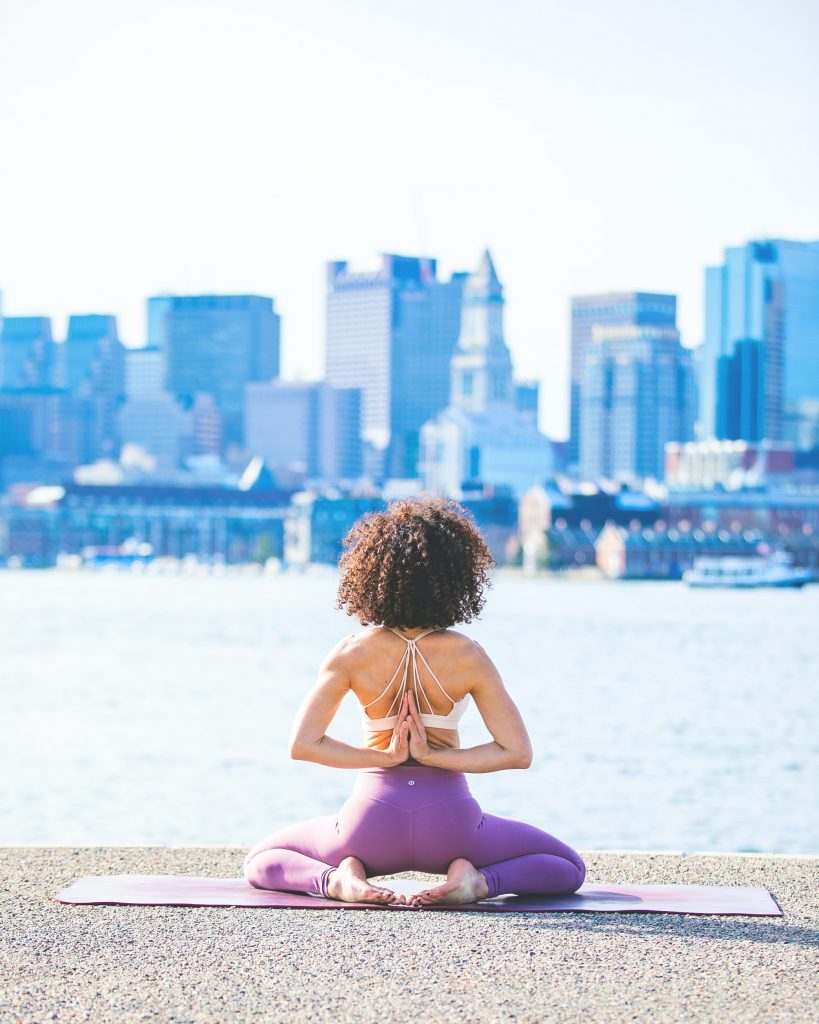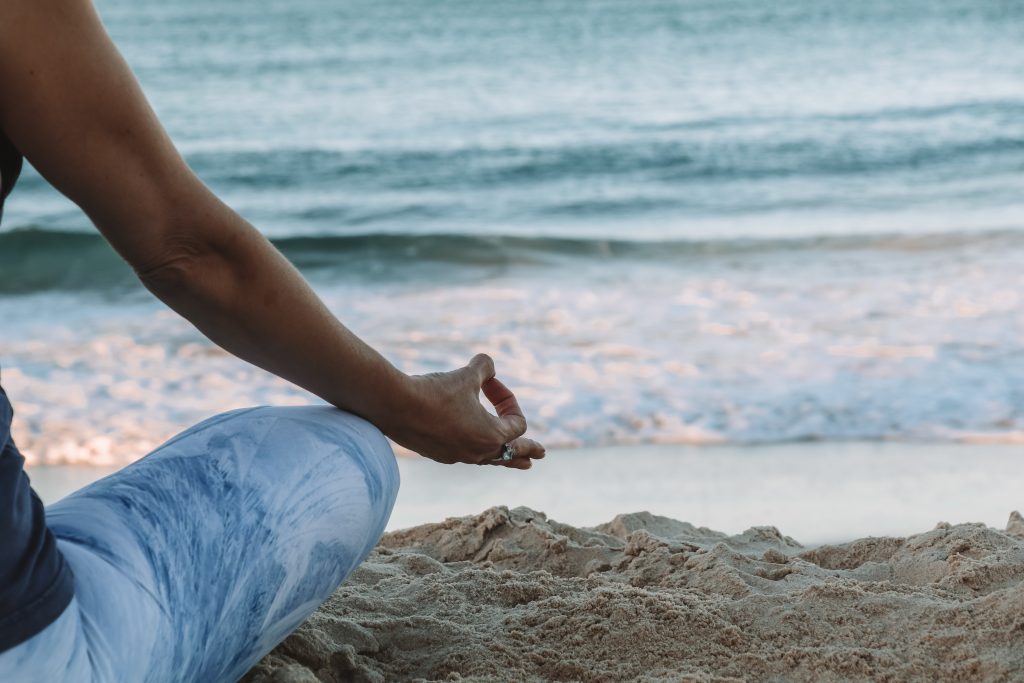So, you’ve decided to start practicing yoga at home. That’s fantastic! Creating a sacred space for your practice can greatly enhance your experience and help you cultivate a deeper connection with yourself and the practice. Whether you have a whole room dedicated to yoga or just a small corner in your living space, it’s important to create an environment that promotes relaxation, focus, and tranquility. In this article, we’ll explore some practical tips and ideas for designing a sacred space that aligns with your personal preferences and supports your yoga journey. Let’s get started!

This image is property of images.unsplash.com.
Choosing the Right Space
When it comes to practicing yoga at home, it’s important to find a space that is quiet and peaceful. Look for an area in your home where you can create a sense of tranquility and solitude. This will help you to fully immerse yourself in your practice and find a sense of inner calm.
In addition to a quiet space, make sure that there is enough room for movement. Yoga involves various poses and sequences that require some space to stretch and extend your body. Therefore, it’s essential to have enough room to move freely without restrictions.
Consider the natural light and ventilation in the space you choose for your practice. Natural light can create a soothing and uplifting ambiance, while good ventilation ensures fresh air circulation. Both of these factors can enhance your overall experience and help you feel more connected to nature during your practice.
Lastly, create a clean and clutter-free environment. A cluttered space can be distracting and can hinder your ability to fully focus on your practice. Clear any unnecessary items from your chosen space, creating a clean and inviting atmosphere where you can fully immerse yourself in your yoga practice.
Setting the Mood
Creating the right mood in your yoga space can greatly enhance your practice. Start by selecting calming colors and decorations that promote relaxation and tranquility. Colors such as soft blues, greens, and neutral tones can create a soothing atmosphere. Consider incorporating elements of nature, such as plants or natural materials, to bring a sense of grounding and connection to the Earth.
Using aromatic candles or incense can help create a serene and inviting ambiance. Scents like lavender, sandalwood, or jasmine are known for their calming properties. As you light these candles or burn incense, the soothing aroma will fill the air and help to relax your mind and body.
Music can also play a significant role in setting the mood for your yoga practice. Choose soft and soothing instrumental tracks or gentle nature sounds to create a peaceful and tranquil atmosphere. The sound of flowing water or chirping birds can transport you to a state of deep relaxation and calmness.
Consider dimming the lights or using natural lighting sources to create a soft and gentle environment. Harsh lighting can be jarring and may hinder your ability to fully relax and focus. Soft, warm lighting can create a sense of intimacy and help you feel more at ease during your practice.

This image is property of images.unsplash.com.
Gathering the Essential Props
Having the right props can greatly enhance your yoga practice and support your body in various poses. One of the most essential props is a high-quality yoga mat. Look for a mat that provides enough cushioning and grip to ensure stability during your practice. Investing in a good mat will not only provide comfort but also help prevent slipping and injuries.
In addition to a yoga mat, consider using blocks, straps, or bolsters for added support. These props can assist you in achieving proper alignment and deepen your stretches. Blocks can be used as extensions for your arms or legs, straps can help with reaching and stretching, and bolsters provide support for restorative poses.
Having a comfortable and supportive cushion is also important, especially if you plan to incorporate meditation or seated poses into your practice. Look for a cushion that provides enough padding to keep your hips and spine comfortable and aligned. This will allow you to focus on your breath and maintain a relaxed state throughout your practice.
Consider using an eye pillow or blanket to enhance relaxation during savasana or other restorative poses. Covering your eyes with a soft, weighted pillow can help release tension and promote a deep sense of relaxation. Similarly, wrapping yourself in a cozy blanket can create a feeling of nurturing and comfort.
Clearing and Cleansing the Space
Before beginning your yoga practice, it can be beneficial to clear and cleanse the space to create a sacred and energetically balanced environment. There are various methods you can use to achieve this.
Burning sage or palo santo is a common practice to clear negative energy and purify the space. As the smoke from these sacred plants fills the room, it acts as a natural cleanser and purifier. Moving the smoke around your space with intention and allowing it to reach all corners can help remove any stagnant energy.
Sound therapy is another effective way to clear the energy in your space. Using bells or singing bowls, create sounds and vibrations that resonate throughout the room. The vibrations from these instruments can help release any stuck or stagnant energy and create a harmonious and balanced atmosphere.
Opening windows and allowing fresh air to flow into the space is an excellent way to cleanse and refresh the energy. Fresh air can bring in new energy and remove any stagnation or heaviness that may be present. Additionally, it can provide a sense of connection to the outside world and to nature.
You can also incorporate the use of essential oils or floral waters to cleanse and purify the space. Sprinkle a few drops of your preferred essential oil or floral water in the air or on surfaces to create a refreshing and uplifting scent. Lavender, eucalyptus, or rose water are popular choices that promote relaxation and balance.

This image is property of images.unsplash.com.
Creating an Altar or Focal Point
An altar can serve as a focal point for your yoga practice, providing a sacred space where you can connect with your spirituality. Choose meaningful objects to place on your altar that hold personal significance for you. These objects can serve as reminders of your intentions and as sources of inspiration during your practice.
Including elements from nature, such as rocks, shells, or feathers, can bring a sense of grounding and connection to the Earth. These natural elements help create a harmonious and balanced altar that reflects the beauty and abundance of the natural world.
Displaying images or statues of deities or gurus that resonate with you can be a powerful way to connect with your spiritual practice. These representations can serve as sources of guidance and inspiration as you deepen your yoga journey.
Personalize your altar with sacred texts or symbols that hold personal significance. Whether it’s a verse from a beloved spiritual book or a symbol that represents a specific aspect of your practice, these items can anchor and deepen your connection to your spiritual path.
Establishing Rituals and Intentions
Incorporating rituals and setting intentions before each yoga practice can enhance your focus and create a sense of purpose. Begin each practice with a grounding ritual to bring your awareness to the present moment. This can be a simple act, such as taking a few deep breaths or greeting the space with a mantra or prayer.
Setting an intention for your yoga session allows you to align your practice with a specific goal or focus. Whether it’s cultivating presence, finding balance, or releasing tension, setting an intention brings clarity and purpose to your practice. Take a moment to reflect on what you wish to cultivate or let go of during your practice, and set your intention accordingly.
Affirmations or mantras can be used throughout your practice to support your intention. Repeat positive affirmations or sacred chants that resonate with you, either silently or out loud. This practice can help shift your mindset and deepen your connection to your intention, ultimately enhancing the transformative power of your practice.
As you near the end of your practice, take a moment to express gratitude for the time and space you’ve dedicated to yourself. Reflect on the benefits and growth you’ve experienced during your practice and express gratitude for your body and mind. This practice of gratitude prepares you to carry the positive energy and intentions from your practice into the rest of your day.
Creating a Sacred Playlist
Choosing the right music for your yoga practice can greatly enhance your overall experience and create a sacred atmosphere. Opt for calming and instrumental tracks that provide a soothing and supportive backdrop to your practice. The absence of lyrics can help minimize distractions and allow you to fully immerse yourself in the present moment.
Consider including chants or mantra recitations in your playlist. These sacred sounds can help activate and align your energy centers, creating a deeper connection to your practice. Chanting mantras or sacred syllables, such as “Om,” can create a vibrational harmony that resonates throughout your body, mind, and spirit.
There are many curated playlists available specifically designed for yoga practices. These playlists often include a mixture of instrumental tracks, nature sounds, and chants, creating a harmonious blend of sounds that supports your practice. Experiment with different playlists and find one that resonates with your practice and personal preference.
Avoid choosing fast-paced or distracting songs that may disrupt your focus or the flow of your practice. Your yoga playlist should promote relaxation, mindfulness, and a sense of inner peace.
Maintaining Privacy and Boundaries
When practicing yoga at home, it’s important to establish privacy and boundaries to create a dedicated and uninterrupted practice space. Inform your household members about your practice and ask for their cooperation in honoring your personal space and time. Setting clear expectations and boundaries will help ensure a peaceful and undisturbed practice.
If you don’t have a dedicated room for your practice, you can use room dividers or curtains to create a physical boundary. This can provide a visual reminder to others in the household that you are engaged in your yoga practice and should not be disturbed.
Establishing a schedule or designated practice time can help you maintain consistency and provide a structure for your practice. Communicate your practice schedule with your household members, allowing them to plan their activities accordingly and minimizing interruptions during your practice time.
Ensure silence during your practice by minimizing distractions and noise. Turn off notifications on your phone or set it to silent mode. Communicate with your household members, kindly asking them to avoid unnecessary noise during your practice. Creating a serene and quiet environment will enhance your ability to focus and connect with your inner self.
Personalizing Your Space
Personalizing your yoga space is an opportunity to infuse your practice with elements that inspire and motivate you. Consider adding personal touches that reflect your individuality and create a space that feels truly yours.
Hang inspiring quotes or images on the walls that speak to your heart. These visual reminders can provide a source of inspiration and motivation, helping you stay focused and committed to your practice.
Incorporate plants or flowers into your space to bring in natural energy and beauty. Plants create a sense of vitality and help purify the air, creating a healthier environment. Choose low-maintenance plants that are suitable for indoor spaces to make care and maintenance easier.
Include items that reflect your spiritual beliefs and practices. This could be crystals, prayer beads, statues of deities, or any other sacred object that resonates with your spiritual journey. Placing these items in your practice space can serve as a reminder of your connection to something greater than yourself.
Conclusion
Creating a sacred space for your home yoga practice is a powerful way to deepen your experience and enhance your overall well-being. By finding a quiet and peaceful area, setting the mood with calming colors and decorations, gathering essential props, clearing and cleansing the space, and personalizing it to reflect your spiritual beliefs, you can create an environment that supports and nourishes your practice.
Establishing rituals and intentions, creating a sacred playlist, maintaining privacy and boundaries, and adding personal touches will further enhance your yoga space, making it a transformative and deeply fulfilling experience. The journey of self-discovery and growth through yoga begins with cultivating a dedicated space where you can fully immerse yourself in the practice. Embrace this opportunity to create a haven for your yoga practice and enjoy the countless benefits it brings to your mind, body, and soul.



